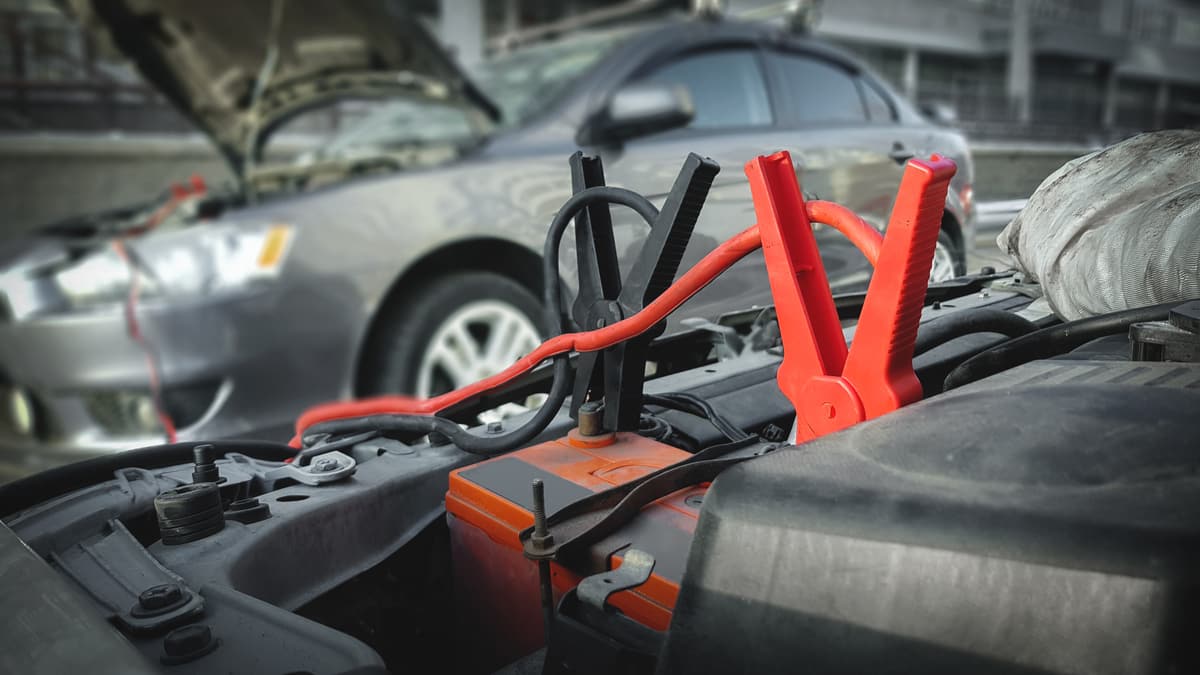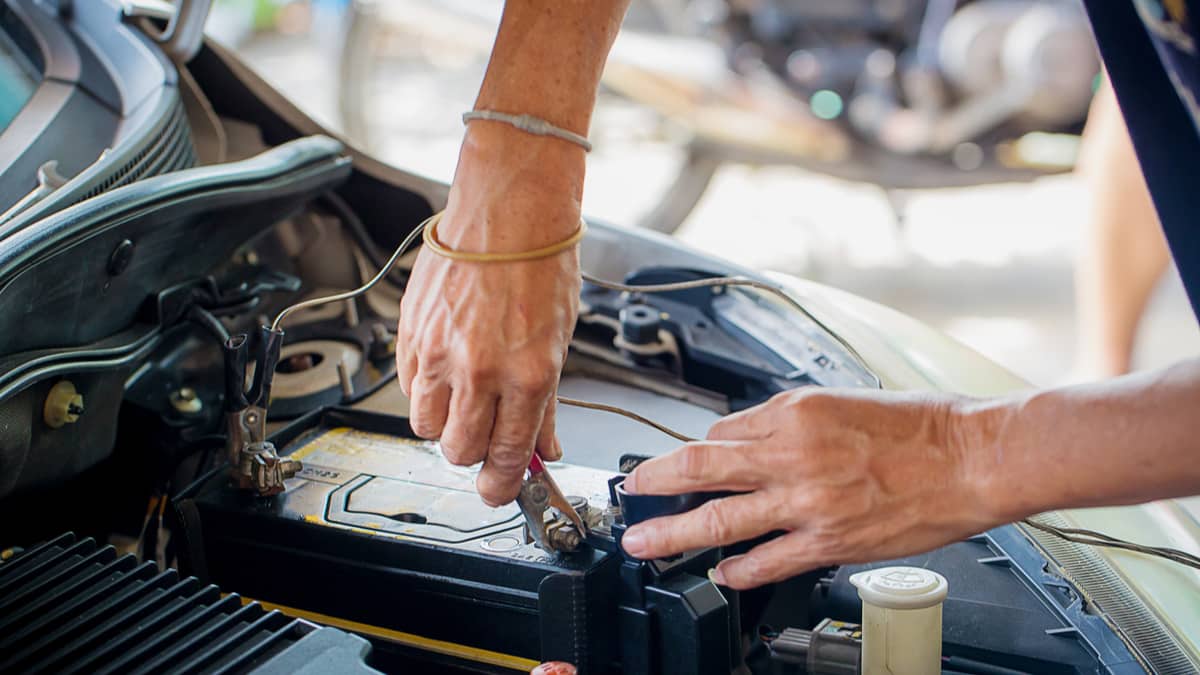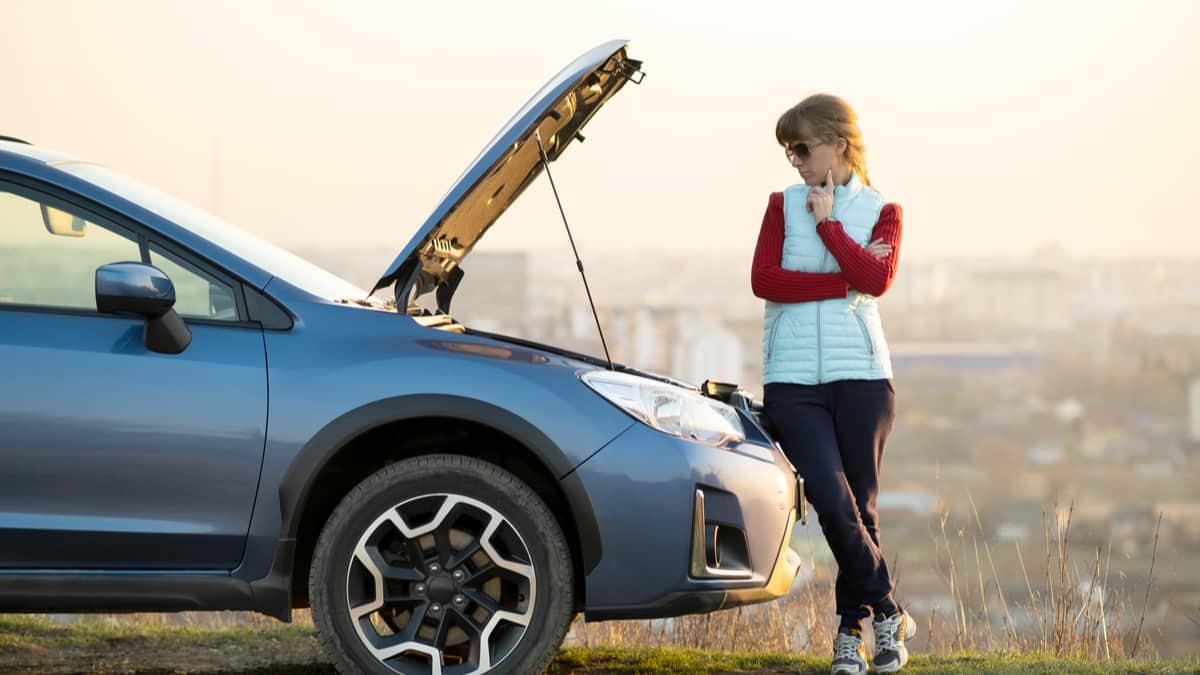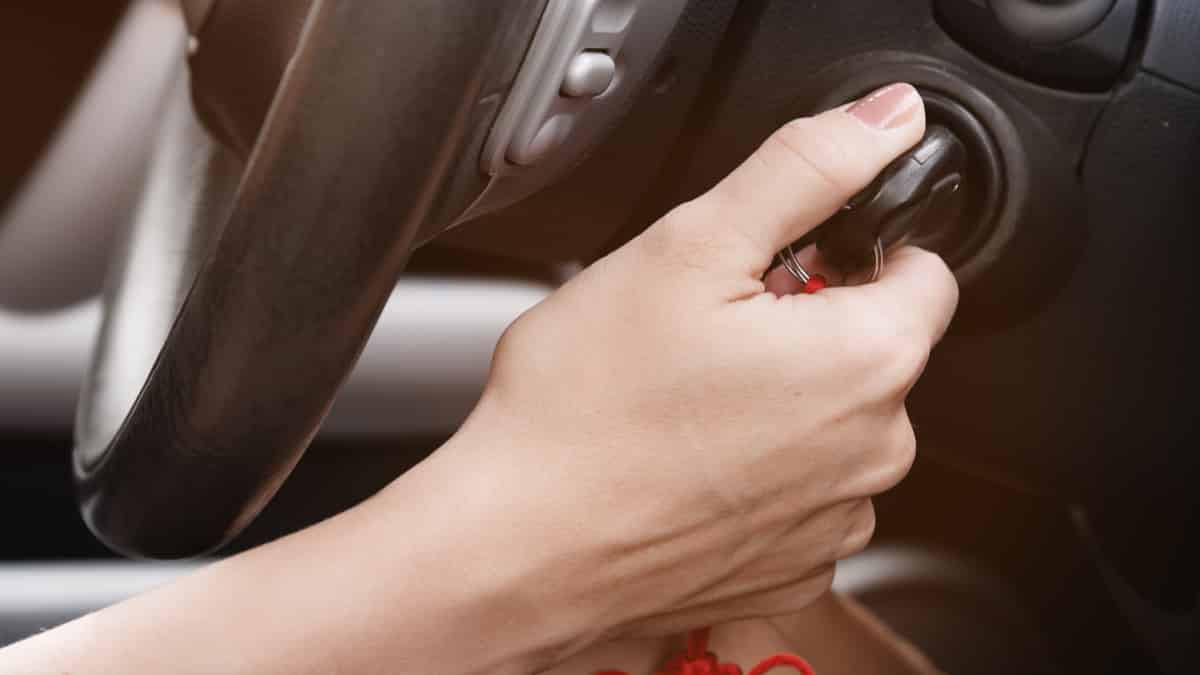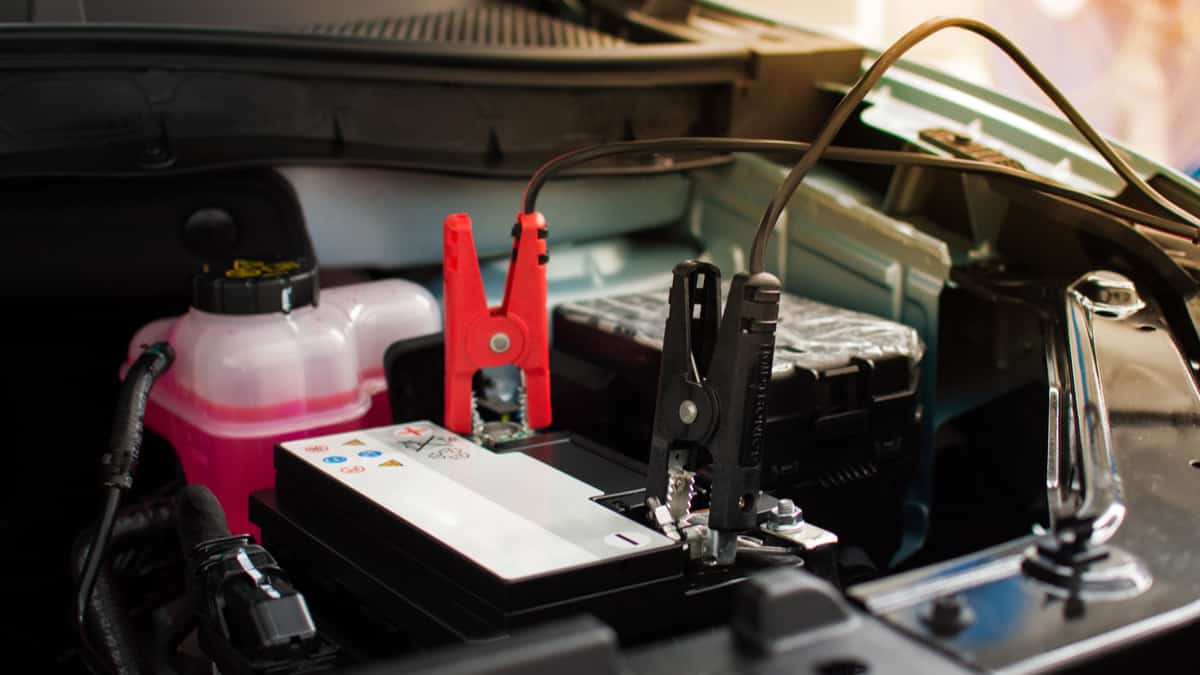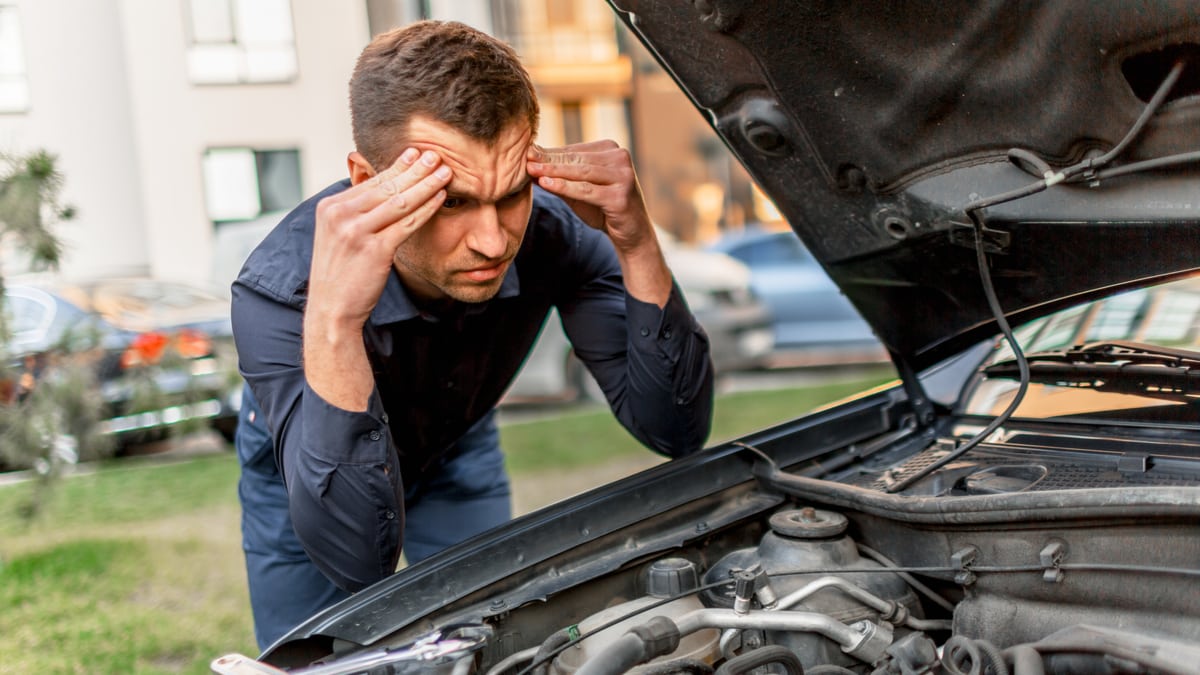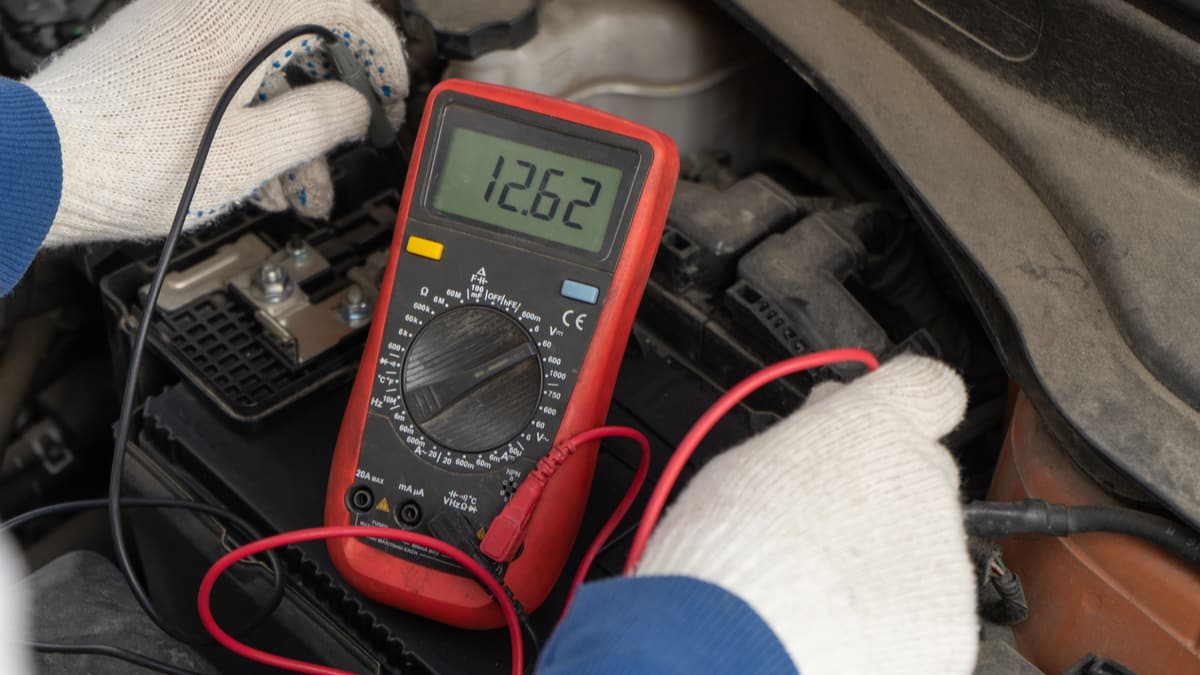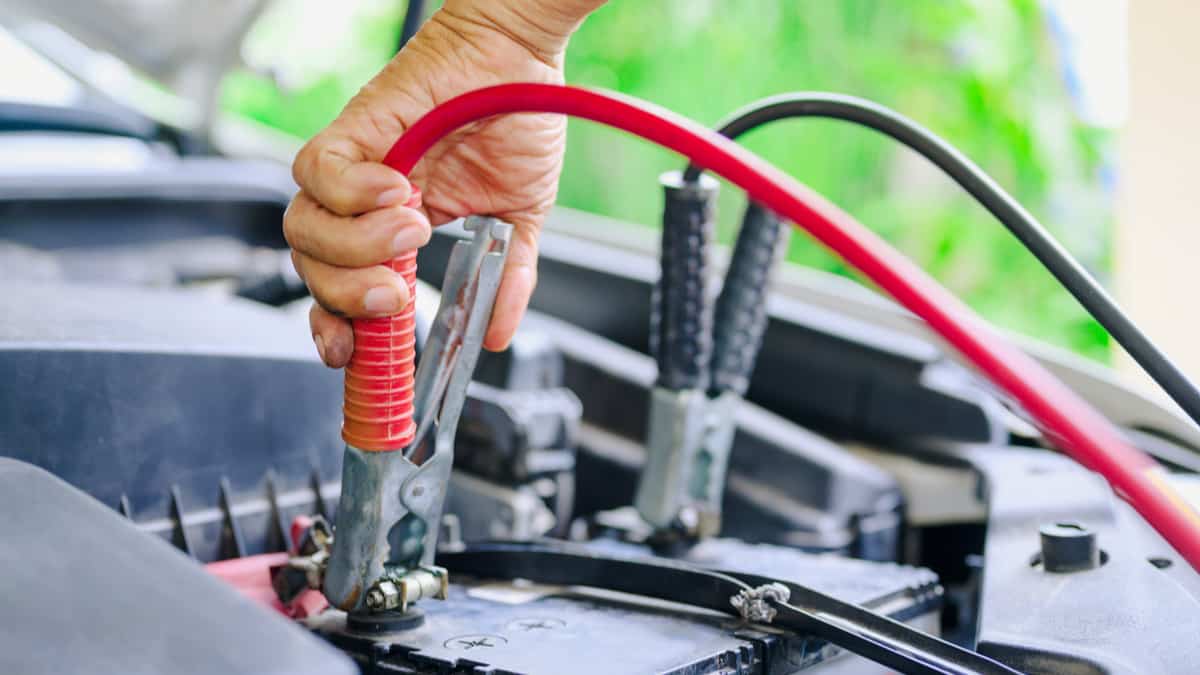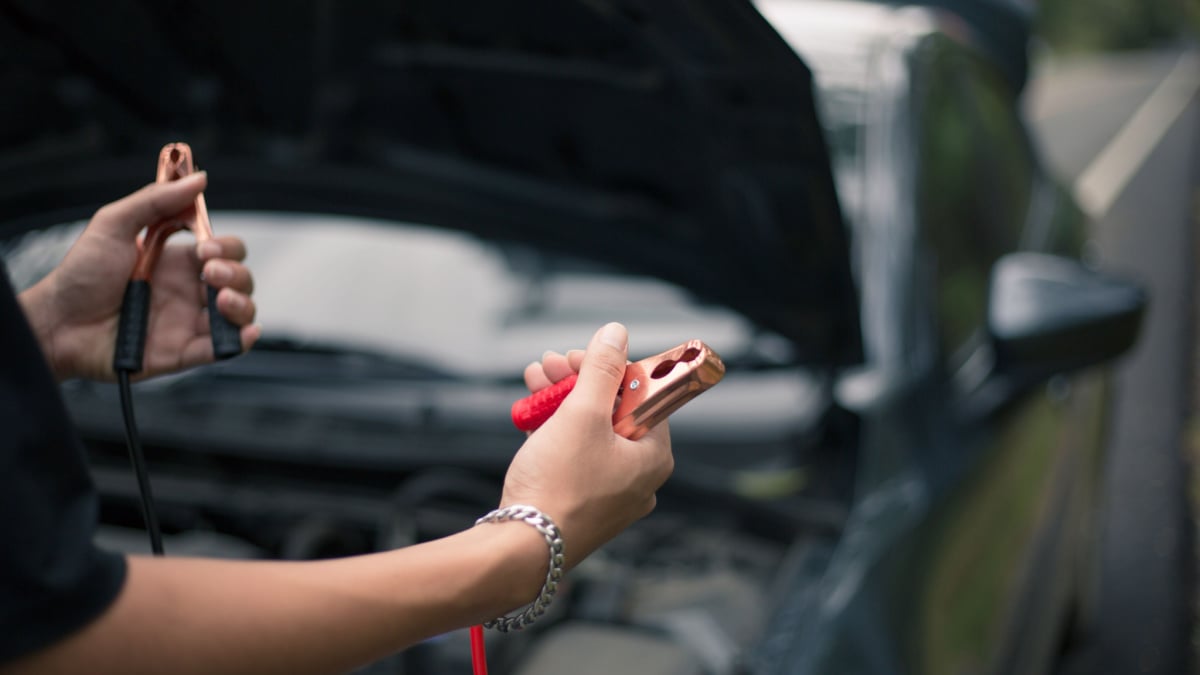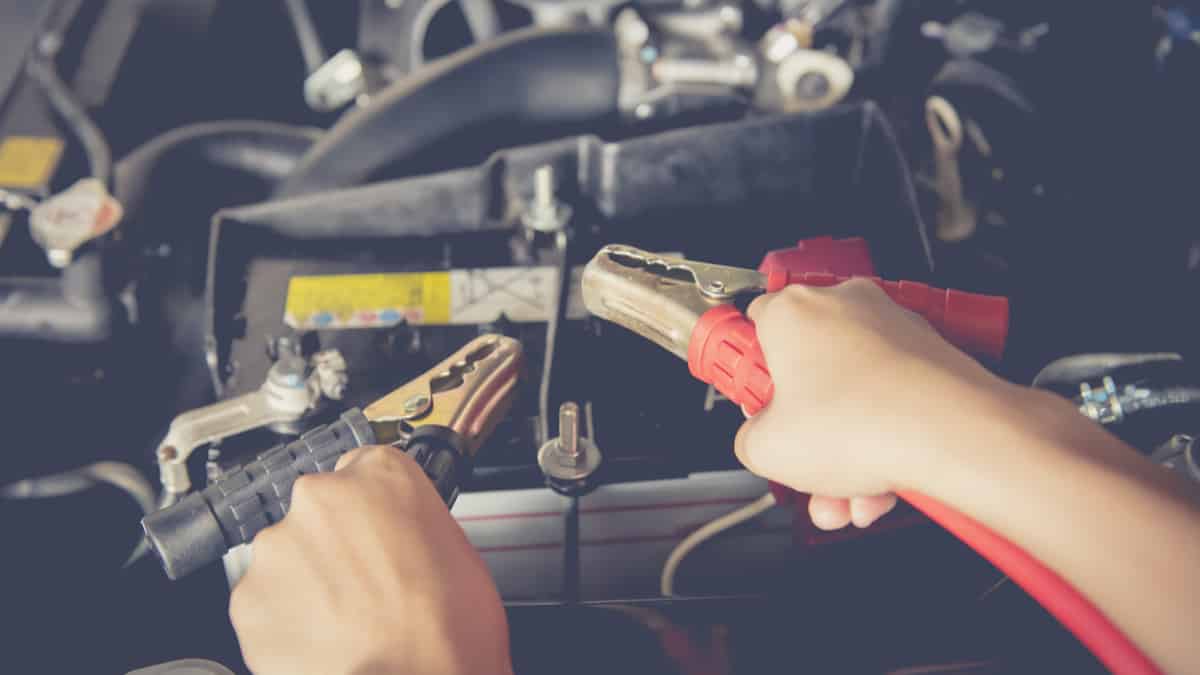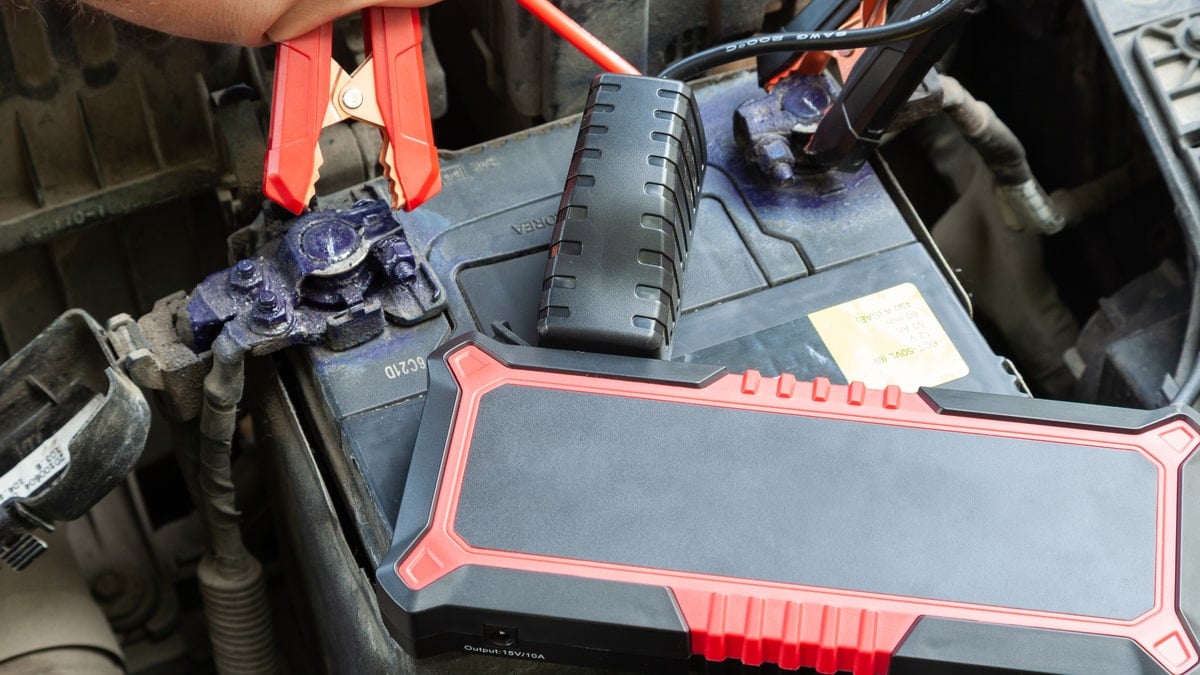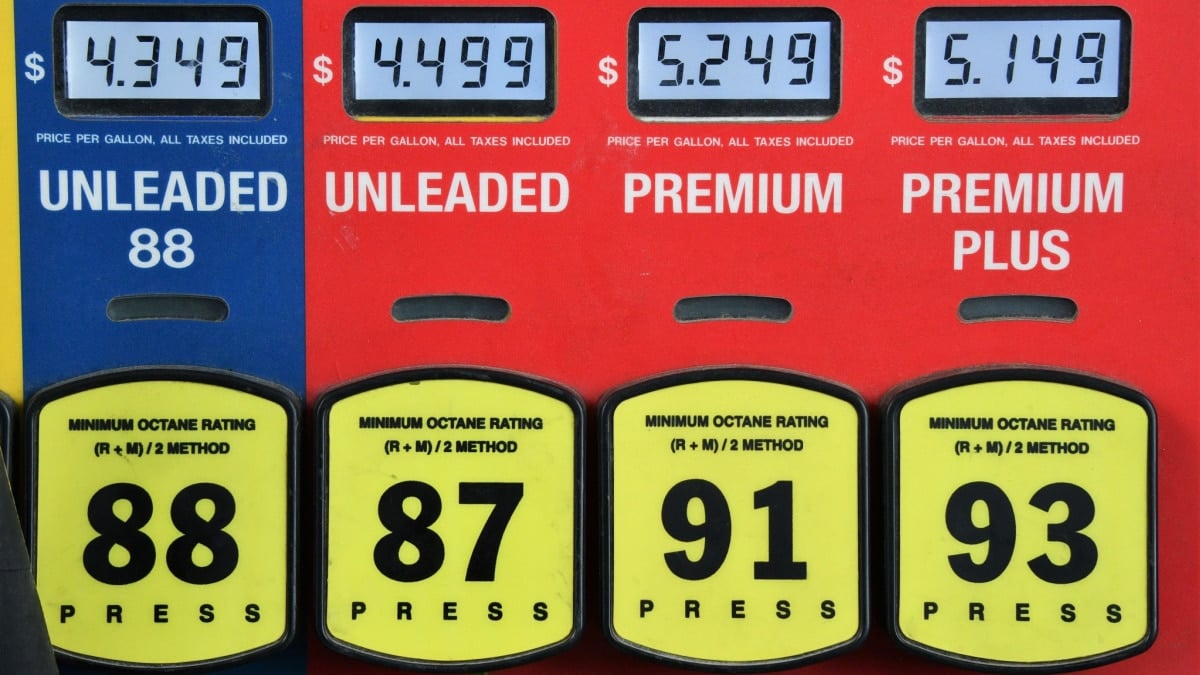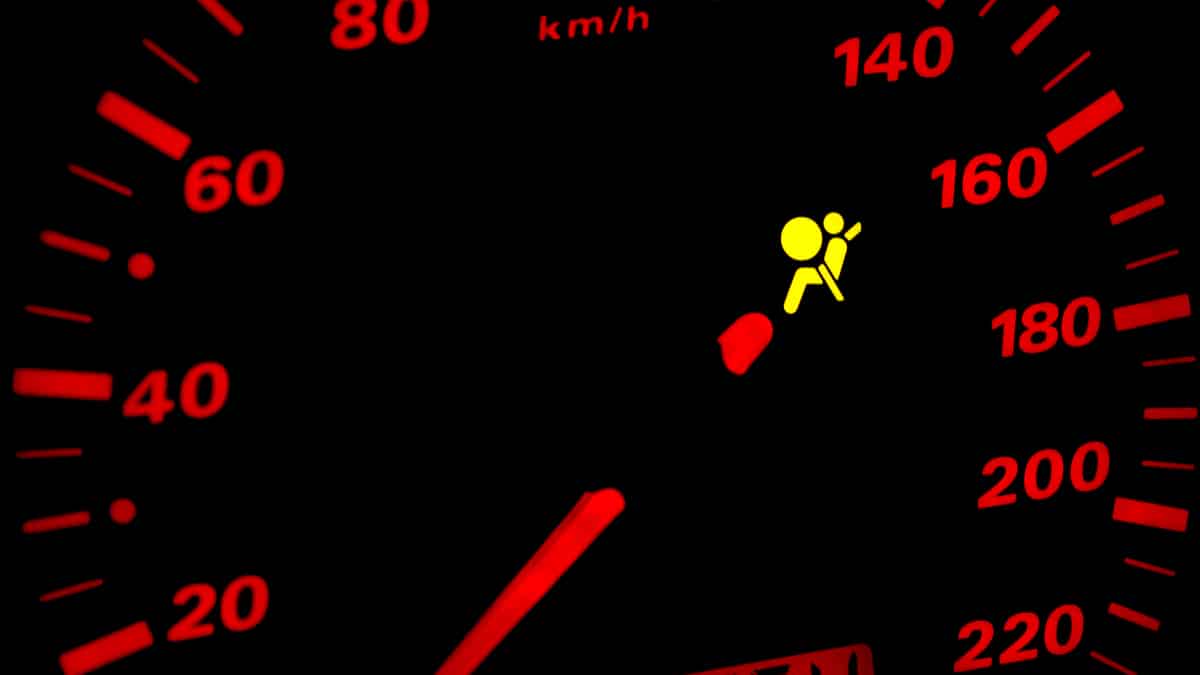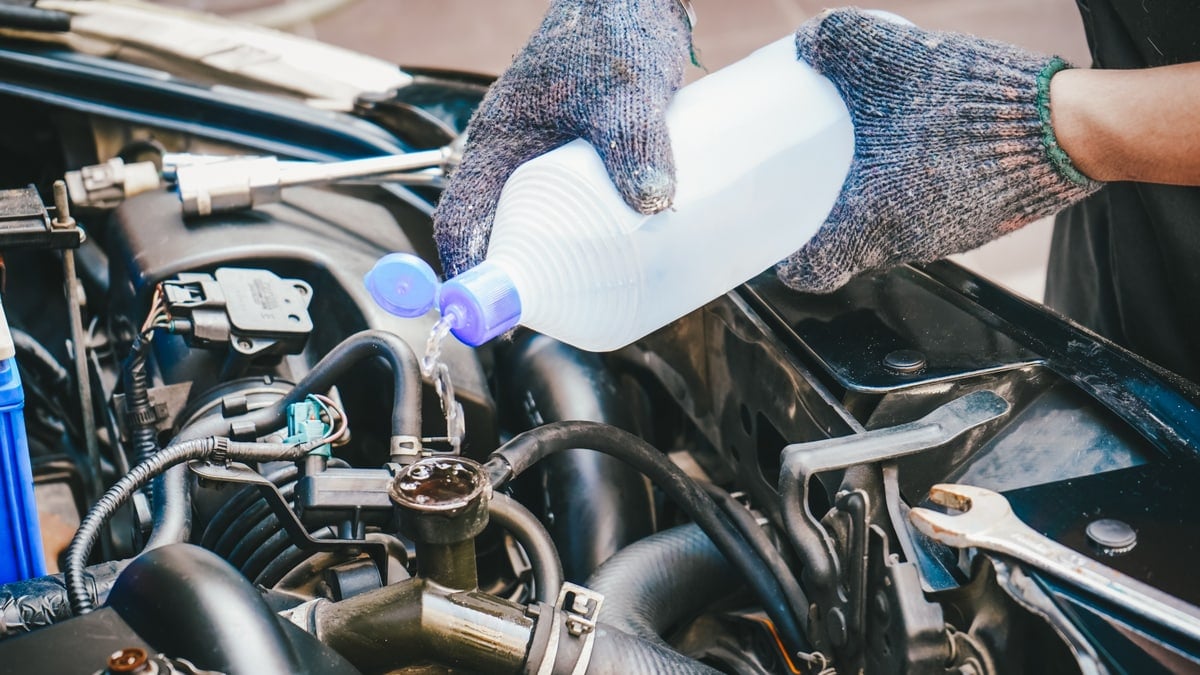Everyone deals with a dead car battery at some time in their lives, but there are conditions that make it unfavorable to jump a car.
One such issue is jump starting the car when the weather is bad. Can you jump start a car in the rain?
In this guide, I discuss whether you should jump start a car in the rain. I also determine how to jump start the vehicle safely.
Can You Jump Start a Car in the Rain?
Yes. You can jump start a car in the rain, and it’s safe if you take precautions. Water conducts electricity, so it might seems like it would be unsafe. However, a car runs on 12 volts of DC power with amperage of 48 to 50 Ah. These are safe ranges to work with, even when you are in the rain.
People can resist up to 10,000 ohms of resistance. With a 12-volt battery, you are dealing with 0.012 amps, so it’s not going to affect your body as long as you do everything correctly.
Still, you need to keep the rain from hitting the open terminals of the jumper wire, and you must use caution while connecting everything.
Dangers of Jump Starting a Car
If you don’t have experience jump starting a car, you could be in danger. With a faulty battery, there’s always the chance of damaging the vehicle’s electrical system or starting a fire. Batteries hold sulfuric acid, which is very flammable. The jumper cables can create sparks when used wrong, leading to a possible explosion or fire if you aren’t careful.
If you damage parts of the car, you could be looking at expensive repair bills. That’s why it’s best to call roadside assistance or get help from a professional if you aren’t sure what you are doing.
RELATED: 10 Best Portable Jump Starters – Review & Buyer’s Guide
Prevention Tips for Jump Starting in the Rain
When you jump start a vehicle in the rain, you can ensure safety by following a few simple tips. Here are some to consider:
- Shield the battery terminals from the rain.
- Connect compatible vehicles together.
- Ensure all of the connections are tight.
- Connect the red (positive) clamp first, then the black (negative).
- Don’t allow the cables to touch one another.
- Follow all of the procedures laid out below.
RELATED: 8 Things That Can Drain Your Car Battery (& How To Prevent It)
How to Jump Start a Car in the Rain
1. Turn Off Electronics
Most importantly, you want to ensure that everything electronic is turned off. You don’t want anything pulling unnecessary power when the battery gets jumped.
If there’s enough power for your vehicle, you can turn it on to the accessory placement and switch everything off. This includes your radio, headlights and navigation systems.
2. Park Other Vehicle Close
If you are using another vehicle, you want to get it as close to the dead car as possible. The jumper cables must reach between the two batteries without straining.
However, there should also be space between the vehicles. You don’t want them touching one another. Obviously, if you are using a battery pack to jump from, this step will be irrelevant to you.
3. Cover Hood
It’s important to keep as much rain out of the battery area as possible. While you should be safe, you don’t want to add any unnecessary threat.
If you have water-resistance materials, such as a poncho or drape, you can put it over the two hoods. Not only does this protect the electronics of the car, but it keeps you from working in the rain.
4. Attach Jumper Cables
With both car engines turned off and the keys removed, you can start connecting the jumper cables. Attach the red (positive) jumper cable to the red terminal of the dead battery first. You might need to remove a small cover to access it. Connect the other side to the red terminal of the good battery first.
You will do the same procedure with the black (negative) cable. Start by connecting the black jumper connected to the good vehicle battery. Now, attach the other side to the negative terminal of the dead battery. You can also place it on a metal surface on the car to create a ground connection. Never touch the two connectors together.
RELATED: What Size Jumper Cables Do I Need? (2 vs 4 vs 6 Gauge)
5. Start Cars
Start up the car with the healthy battery. You want to let this vehicle run for a couple of minutes before you do anything else. This step is allowing the electricity to flow to the dead car battery.
Once you have waited, it’s time to crank the engine of the dead car. If it doesn’t start right away, check all of your connections once again. You might need to tighten something up or clean off the surface of the terminals for a better connection.
If you can’t get the battery jumped, you might need to call roadside assistance. It might be time to have the vehicle towed to a shop for a deeper inspection, especially if you are stranded in an inconvenient location.
6. Disconnect Cables
Once the car with the dead battery starts, you are ready to remove the jumper cables. However, you don’t want to turn the car off. Instead, allow it to run for 15 or 20 minutes, permitting the battery to get the full charge it needs.
When you remove the jumper cables, you want to work in the opposite order of how you attached them. By moving backward through the steps, you ensure maximum safety. Remember, it’s important that those clamps don’t come in contact with one another, so keep your eye on them as they are being removed.
With the car running, you are ready to hit the road. Hopefully, the dead car battery was simply from leaving your lights on, and not due to a dead alternator or something more serious. If you continue having problems, you want to have the system checked out.
RELATED: How to Disconnect a Car Battery (7 Easy Steps)
Categories: Electric
